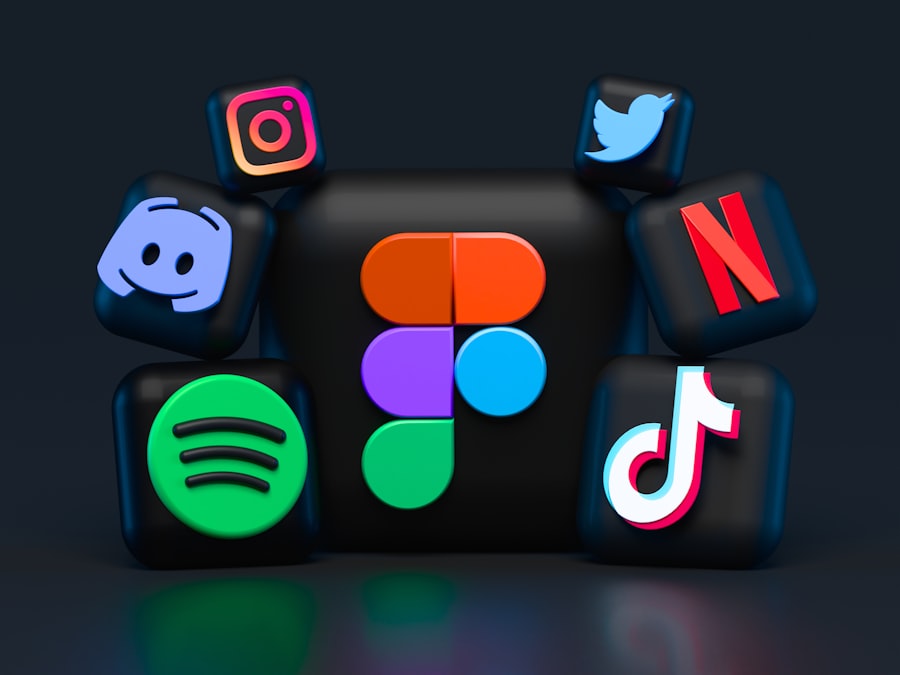In recent years, the advertising landscape has undergone a significant transformation, with musicvertising emerging as a powerful tool for brands seeking to connect with consumers on a deeper level. This phenomenon, which blends music and advertising, has gained traction as marketers recognize the potential of sound to evoke emotions and create memorable experiences. The rise of digital platforms and streaming services has further fueled this trend, allowing brands to reach audiences in innovative ways.
As consumers increasingly engage with content through their devices, the integration of music into advertising campaigns has become a strategic imperative for companies aiming to capture attention and foster brand loyalty. The evolution of musicvertising can be traced back to the early days of radio and television, where catchy jingles and theme songs became staples of brand identity. However, the modern iteration of musicvertising is far more sophisticated, leveraging data analytics and consumer insights to tailor musical choices that resonate with target demographics.
Brands are now collaborating with artists, composers, and influencers to create original soundtracks that not only enhance their messaging but also align with the cultural zeitgeist. This shift reflects a broader understanding of the role that music plays in shaping consumer perceptions and behaviors, making it an essential component of contemporary advertising strategies.
Key Takeaways
- Musicvertising has become increasingly popular in advertising, with brands using music to connect with consumers and create memorable experiences.
- Music has a significant impact on consumer behavior, influencing emotions, attitudes, and purchasing decisions.
- Emotions play a crucial role in musicvertising, as music has the power to evoke specific feelings and create strong emotional connections with consumers.
- Music is used as a branding tool in advertising to create a distinct identity, enhance brand recall, and communicate brand values.
- Jingles are an effective tool in advertising, as they are catchy, memorable, and can create strong associations with a brand.
- Musicvertising can enhance memory recall, as music has the ability to trigger strong memories and associations with specific brands or products.
- Legal and ethical considerations are important in musicvertising, as brands need to ensure they have the rights to use music and that their messaging is ethical and respectful.
- Future trends in musicvertising and the advertising industry include the use of personalized music experiences, interactive music campaigns, and the integration of music with emerging technologies.
The Impact of Music on Consumer Behavior
Music has a profound impact on consumer behavior, influencing everything from purchasing decisions to brand perception. Research has shown that the right musical accompaniment can enhance the overall shopping experience, making consumers more likely to engage with products and services. For instance, studies have demonstrated that playing upbeat music in retail environments can lead to increased sales, as it creates a positive atmosphere that encourages customers to linger longer and explore more.
Conversely, slower tempos can evoke feelings of relaxation, prompting consumers to make more thoughtful purchasing decisions. This nuanced understanding of how music affects mood and behavior has led brands to carefully curate their soundscapes to optimize consumer engagement. Moreover, the emotional resonance of music can significantly shape brand loyalty and consumer preferences.
When consumers associate a particular song or melody with a positive experience or memory, they are more likely to develop an affinity for the brand that employed it. This phenomenon is particularly evident in advertising campaigns that utilize popular songs or collaborate with well-known artists, as these associations can create a sense of familiarity and trust. As a result, brands are increasingly investing in musicvertising as a means of forging emotional connections with their audiences, recognizing that the right soundtrack can elevate their messaging and enhance overall brand perception.
The Role of Emotions in Musicvertising

Emotions play a central role in the effectiveness of musicvertising, as they are key drivers of consumer behavior and decision-making. Music has the unique ability to evoke a wide range of feelings, from joy and nostalgia to excitement and even sadness. Advertisers harness this emotional power by selecting musical elements that align with their brand message and target audience.
For example, an advertisement for a luxury product may feature classical music to evoke sophistication and elegance, while a campaign aimed at younger consumers might incorporate contemporary pop tracks to convey energy and vibrancy. By tapping into the emotional landscape of their audience, brands can create compelling narratives that resonate on a personal level. Furthermore, the emotional impact of music can enhance storytelling within advertisements, making them more engaging and memorable.
When combined with visual elements, music can amplify the emotional weight of a narrative, drawing viewers into the brand’s world and fostering a deeper connection. This synergy between music and storytelling is particularly effective in creating brand recall; consumers are more likely to remember an advertisement that elicits strong emotions through its musical score. As such, advertisers are increasingly recognizing the importance of emotional resonance in their campaigns, using music as a strategic tool to evoke feelings that align with their brand identity.
Music as a Branding Tool in Advertising
| Metrics | Data |
|---|---|
| Brand Recall | Increased by 24% when music is used in advertising |
| Emotional Connection | Music helps to create a stronger emotional connection with the audience |
| Attention Span | Ads with music are more likely to hold the viewer’s attention |
| Brand Perception | Music can enhance the perception of a brand’s personality and values |
Music serves as a powerful branding tool in advertising, helping companies establish their identity and differentiate themselves from competitors. A well-chosen soundtrack can encapsulate a brand’s essence, conveying its values and personality in ways that words alone cannot. For instance, brands like Coca-Cola have successfully used iconic jingles and catchy tunes to create an instantly recognizable auditory signature that resonates with consumers across generations.
This auditory branding not only enhances recall but also fosters a sense of familiarity and loyalty among consumers who associate specific melodies with positive experiences related to the brand. Moreover, the strategic use of music in advertising can help brands tap into cultural trends and movements, allowing them to remain relevant in an ever-changing marketplace. By aligning their musical choices with popular genres or collaborating with trending artists, brands can position themselves as part of contemporary culture, appealing to younger audiences who value authenticity and connection.
This approach not only strengthens brand identity but also fosters community among consumers who share similar musical tastes. As such, music has become an integral component of branding strategies, enabling companies to forge lasting connections with their audiences.
The Effectiveness of Jingles in Advertising
Jingles have long been a staple of advertising, known for their catchy melodies and memorable lyrics that stick in consumers’ minds. The effectiveness of jingles lies in their ability to create instant recognition and recall; when consumers hear a familiar tune associated with a brand, it often triggers positive associations and memories related to that product or service. Research has shown that jingles can significantly enhance brand recall compared to traditional advertisements without musical elements.
This is largely due to the way our brains process music; melodies are easier to remember than spoken words alone, making jingles an invaluable tool for advertisers seeking to leave a lasting impression. In addition to enhancing recall, jingles also serve as a means of establishing brand personality and tone. A playful jingle can convey a sense of fun and approachability, while a more sophisticated melody may evoke feelings of elegance and luxury.
By carefully crafting jingles that align with their brand identity, companies can effectively communicate their values and connect with their target audience on an emotional level. As such, despite the rise of more complex musical compositions in advertising, jingles continue to hold significant value as an effective marketing strategy that resonates with consumers.
Musicvertising and Memory Recall

The relationship between musicvertising and memory recall is a fascinating area of study within marketing psychology. Numerous studies have demonstrated that music can enhance memory retention by creating strong associations between auditory stimuli and specific experiences or products. When consumers hear a particular song or jingle in an advertisement, it often triggers memories related to that brand or product, making it easier for them to recall it later on.
This phenomenon is known as the “encoding specificity principle,” which posits that memory is enhanced when retrieval cues match the context in which the information was originally encoded. In this way, music serves as a powerful cue that reinforces brand recognition. Furthermore, the emotional connections forged through music can deepen memory recall even further.
When consumers experience strong emotions while listening to a particular piece of music—whether it be joy, nostalgia, or excitement—they are more likely to remember the associated advertisement or brand long after the initial exposure. This emotional engagement creates lasting impressions that transcend mere recognition; it fosters a sense of attachment that can influence future purchasing decisions. As brands continue to explore the intersection of music and memory recall, they are increasingly leveraging this understanding to craft campaigns that resonate deeply with consumers.
Legal and Ethical Considerations in Musicvertising
As musicvertising continues to grow in popularity, legal and ethical considerations have come to the forefront of discussions surrounding its implementation. One major concern is copyright infringement; using copyrighted music without proper licensing can lead to legal repercussions for brands. Advertisers must navigate complex licensing agreements when incorporating popular songs into their campaigns, ensuring they have the necessary rights to use the music in specific contexts.
This often involves negotiating fees with record labels or artists, which can be both time-consuming and costly. As such, many brands are opting for original compositions or collaborations with emerging artists as a way to mitigate these risks while still achieving impactful results. Ethical considerations also play a crucial role in musicvertising practices.
Brands must be mindful of how they use music to influence consumer behavior; manipulative tactics that exploit emotional vulnerabilities can lead to backlash from audiences who feel deceived or manipulated. Additionally, there is an ongoing debate about cultural appropriation within the realm of musicvertising—brands must ensure they respect cultural contexts when incorporating diverse musical elements into their campaigns. Striking a balance between creativity and ethical responsibility is essential for brands looking to build trust with their audiences while effectively leveraging the power of music in advertising.
Future Trends in Musicvertising and Advertising Industry
Looking ahead, several trends are poised to shape the future of musicvertising within the broader advertising industry. One notable trend is the increasing integration of technology into musical experiences; advancements in artificial intelligence (AI) are enabling brands to create personalized soundtracks tailored to individual consumer preferences. By analyzing data on listening habits and emotional responses, AI-driven platforms can generate unique musical compositions that resonate with specific audiences—creating highly targeted advertising experiences that enhance engagement and recall.
Additionally, as social media platforms continue to evolve as key marketing channels, brands are likely to explore new ways of incorporating music into their campaigns through user-generated content and viral challenges. Platforms like TikTok have already demonstrated the power of catchy tunes in driving trends and consumer engagement; brands that harness this potential will be well-positioned to connect with younger audiences who prioritize authenticity and creativity in their interactions with brands. As the advertising landscape continues to evolve alongside technological advancements and shifting consumer preferences, musicvertising will undoubtedly remain at the forefront as an essential strategy for building meaningful connections between brands and consumers.









